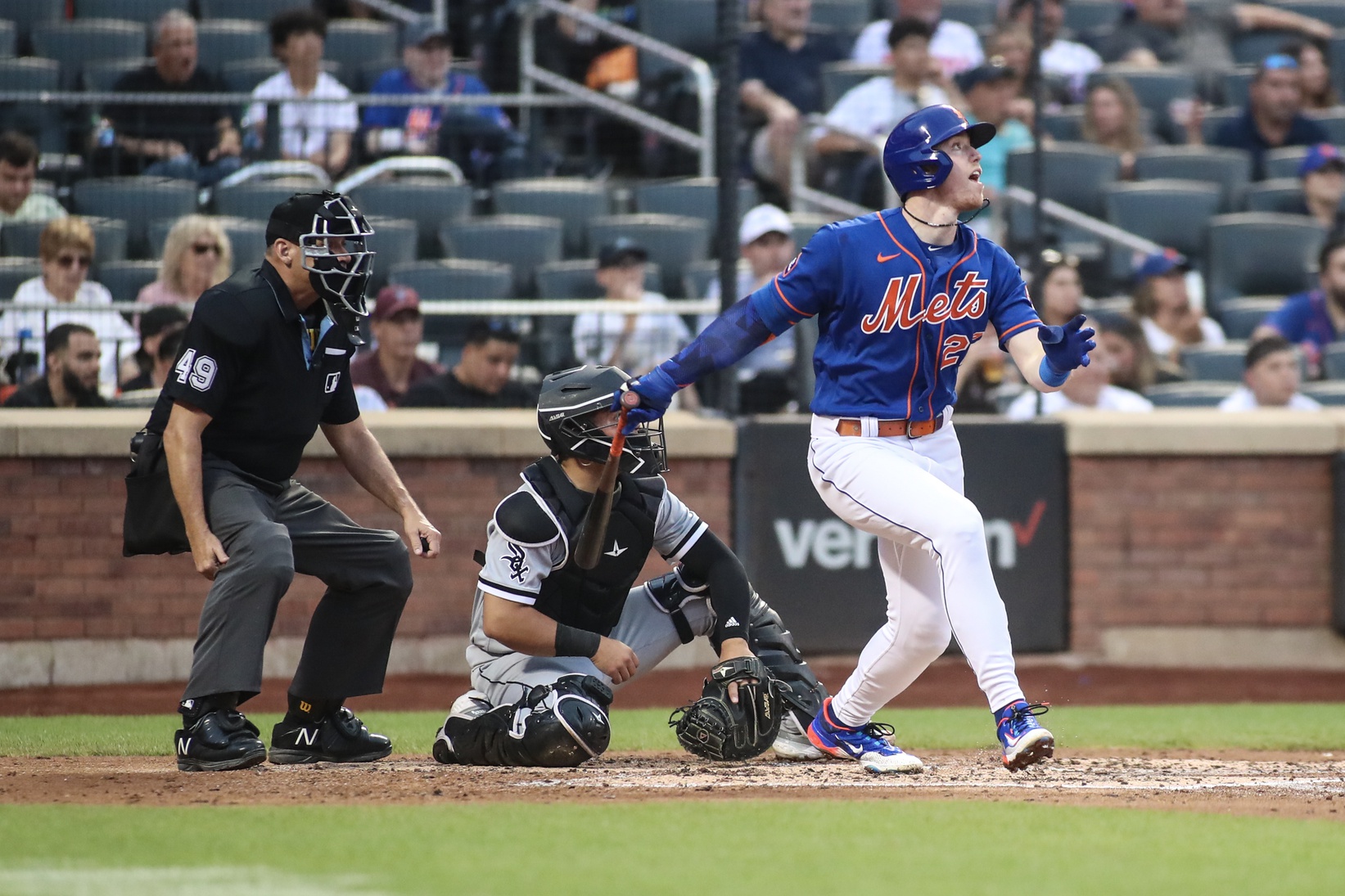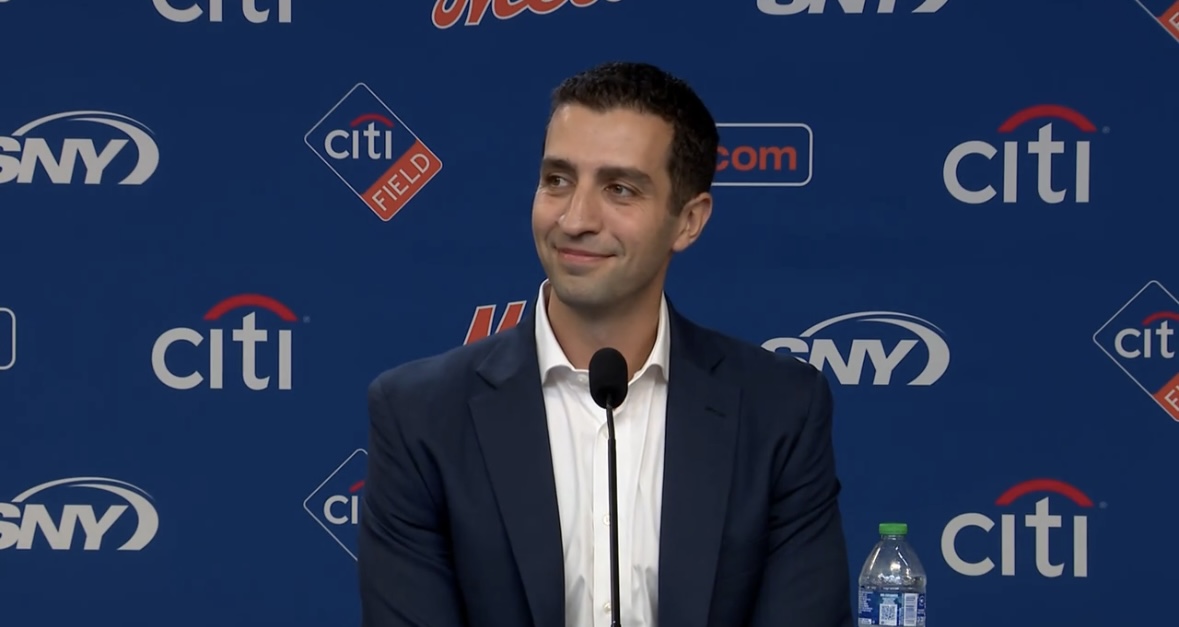This offseason is shaping up to be very interesting for the New York Mets. With conflicting reports about how competitive the team plans to be in 2024, the team’s moves so far have been modest. On the flip side, they’ve been connected with several of the top starting pitchers on the market.
David Stearns is at the center of all this speculation. Many of his comments over the past few days have been telling, especially with the words he chooses. Let’s read between the lines a bit: what did he mean?
‘Competitive’ In the Eye of the Beholder
I’ve wondered what the Mets’ stated intention to be “competitive” in 2024 means. There are many more competitive teams than there used to be from the perspective of playoff contention. Miami and Arizona made the postseason at 84-78 last year, keeping the threshold of competitiveness around .500.
Stearns’ choice of words about being competitive was revealing. “I’m confident and remain optimistic that we’re going to be able to put a team on the field in ’24 that we’re really excited about… that can compete for a playoff spot,” he said. “I think we’re going to be able to do that… It can take a variety of different forms, and there’s not necessarily one path to get there.”
Reading between the lines, the Mets are trying to stay in the playoff hunt, not go all-out for a World Series. That dovetails with what Max Scherzer claimed the Mets told him at the 2023 trade deadline. It’s not that the team won’t spend, but they’re not looking to buy a championship in 2024.
Perhaps that’s a reading based on what I think the Mets should do. Still, Stearns’ use of “playoff spot” rather than “championship” shows where his thought process is.

Brett Baty. Wendell Cruz-USA TODAY Sports
Does He Believe in Baty & Co.?
When asked if he’s comfortable with the Mets’ in-house options at third base, Stearns answered, “I am.” He elaborated that no specific player has the job, which may still be the case on Opening Day.
However, his next words may have disclosed his actual thoughts about the position: “I think it is important for us… to learn about our younger players and to provide them opportunity to learn at the major league level… That doesn’t have to be all on Opening Day, but over the course of the year, we’ve got to learn about these guys.
“I’m just staying cognizant as we go through the offseason that we don’t want to freeze these guys out,” he added. “You look at the composition of winning baseball teams, and there is generally this pretty good mix of established veterans and younger players who can provide some energy and spontaneity to a group. I think we have the potential to have that.”
This works in concert with the Mets’ playoff aspirations. A team trying to win the World Series will not enter the season trying to figure out which third-base option can stick. They won’t cite Joey Wendle as an option at third, either.
Stearns seems to view 2024 as an evaluative year for the Mets’ young players. He was clearly referring to Brett Baty and Ronny Mauricio as in-house third-base options but also included Mark Vientos in that conversation. He added that there are other young players the Mets want to see in the big leagues.

Bullpen Plan
One of Stearns’ achievements with Milwaukee was turning straw into gold in the bullpen. The Mets tried to do that in the past with little success. Stearns observed that their bullpen is “pretty open, and that’s not a bad thing.” Noting the volatility in bullpen performance, he seemed keen on adding quantity via free agency and trades.
How many proven relievers the Mets will pursue is unclear, but Stearns is apparently up to his old tricks. The question is if he can maintain that success with a new organization.
Stearns pointed to “a diversity of looks and stuff” rather than velocity alone as the traits he’s looking for in relievers. He agreed that the Mets need a long reliever who can provide a spot start. He remained noncommittal about utilizing an in-house option in that role.
How Many Starting Pitchers?
“We came into the season saying we wanted to add multiple [starting pitchers],” Stearns explained. “We’ve added one, so I think certainly adding at least one more is needed. I wouldn’t mind adding more than that, but certainly at least one more.”
That’s a creative non-answer. Reports indicated that the Mets plan to acquire multiple mid-tier starters. They’ve also been pursuing Yoshinobu Yamamoto. It appears Stearns’ “I wouldn’t mind” means, “We want to but don’t want to make it seem we need to.”
Stearns corrected the misconception that he wants one starter, keeping the number indefinite. Still, he denied that the Mets must sign a front-line pitcher to feel comfortable with their rotation, perhaps validating the report about mid-tier starters.
Stearns concluded, “[It’s] probably a little bit early for me to predict what echelon that is.” That may have been a veiled reference to Yamamoto. Stearns confirmed that he and Steve Cohen met with the Japanese pitcher.
In-house, Stearns clarified that the team views Tylor Megill as a starter. When asked why, Stearns replied, “Because starting pitching’s really tough to find, and I think this guy has the chance to do it. He’s demonstrated for various portions of his career that he can do it.”

Photo by Roberto Carlo
Severino
Stearns lauded Luis Severino‘s talent and previous track record of success in New York. Though acknowledging Severino’s injury history, he confirmed the Mets’ trust they can help Severino stay healthy. It’s a befuddling stance for a team that has seen injury after injury to its pitchers since time immemorial, but perhaps Stearns has a legitimate plan.
Either way, it seems that the Mets bet on Severino’s talent and their ability to fix him.
Overall Perspective
At first glance, I thought Stearns’ third base comments were bold. I believed he was trying to carry over his player development success to the Mets without the infrastructure. This was why I objected to acquiring players coming off poor seasons. However, reading into Stearns’ words, I no longer assume this was his intent.
Stearns expressed that the Mets need to get a read on their young players. That means he wants to see what they have, not that he thinks he’ll be able to fix them. I’m sure he has ideas about how to help Baty, Mauricio, and Vientos. Still, giving these players time is evaluative, not a vote of confidence.
Still, Stearns clearly thinks he can get the most out of fringe relievers. The Mets acquired several relievers, including Michael Tonkin, Austin Adams, Andre Scrubb, Kyle Crick, and Justin Slaten (whom they flipped for Ryan Ammons). Some may not make the Mets’ roster, but Stearns is stockpiling arms. It will be interesting to see how he plans to gain more reliability from the bullpen.
Stearns’ enthusiasm about Severino further shows that he trusts he can rejuvenate a struggling player. Although Severino had past success, he’s coming off a disastrous and injury-riddled year. When the season starts, his mechanics will be worth monitoring to see if the Mets had specific changes in mind when they signed him. The Mets’ interest in Lucas Giolito follows a similar pattern, as does their stance on Megill.
I think it’s still fair to question whether Stearns’ focus is premature. Then again, if he’s not going all-in on a championship, maybe the Mets can afford to try to develop not only their players but also their player development. It makes for a fascinating study of Year 1 of the Stearns era.















